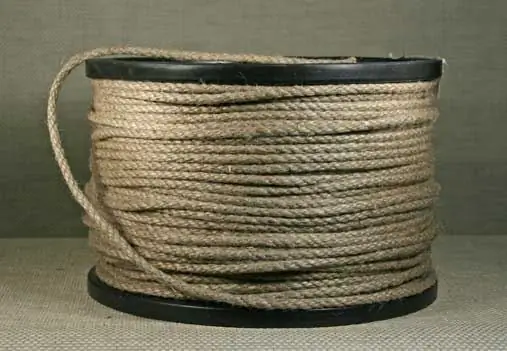Since ancient times, a variety of braided ropes and ropes have been used to move loads. Modern man also uses ropes, which have changed little since ancient times, with the exception of the materials used and some weaving methods.

Instructions
Step 1
Wear gloves and be extremely careful and gentle when handling the ends of the rope, do not jerk it too harshly as there is a wire inside it. It will easily pierce not only your gloves, but also the skin on your hands.
Step 2
Chop off the end of the rope, preferably very evenly. It will be easier to do this if you put it on some kind of iron surface and beat it strictly in one place. To do this, you can use a regular hammer, or rather its sharp end.
Step 3
Divide the rope into two equal parts. It is most convenient to use a screwdriver for this purpose. It is normal that one strand will remain with you, as it were, superfluous, since the ropes are always woven from an unpaired number of strands, usually seven. Untwist the rope about 60-80 cm. In doing so, you should pay special attention to the "extra strand", as it must remain separated from all the others.
Step 4
Make a loop in the rope. To do this, you first need to separate the two parts that you have already separated at a distance of 15-25 cm from the whole rope, then direct them towards each other, and then fold them together. In other words, you need to gradually wrap one part of the rope around the other, while carefully making sure that both halves lie exactly in each other's grooves. Be sure to wrap the tails one more turn when you reach the untouched part of the rope.
Step 5
Weave all the strands that you untwisted earlier back into the rope. In this case, you will need to weave the seventh "extra" strand with the sixth. After you have bound them three times, you need to either cut it off, or already braid it together with the sixth to the very end. Crimp the end of the rope into the tube. This is necessary if you want to be sure that the rope will not unravel at the slightest load on it.






